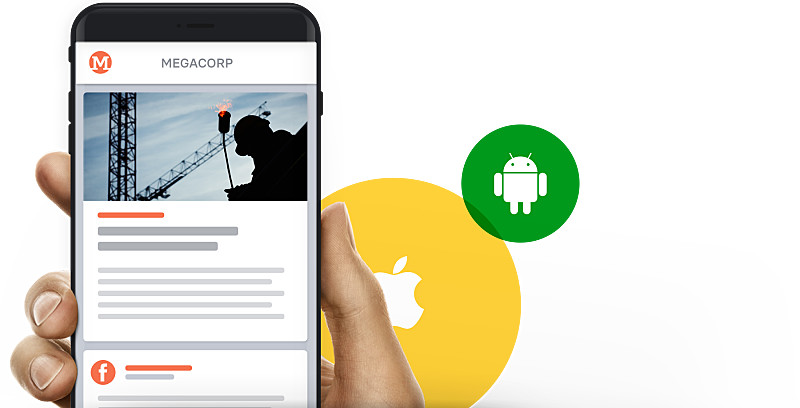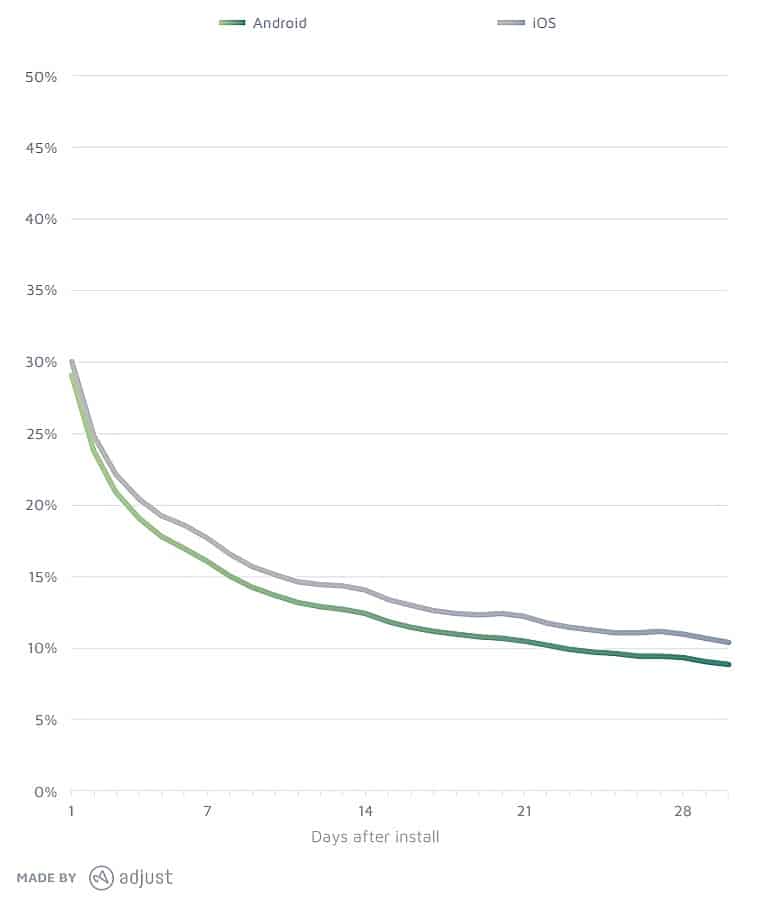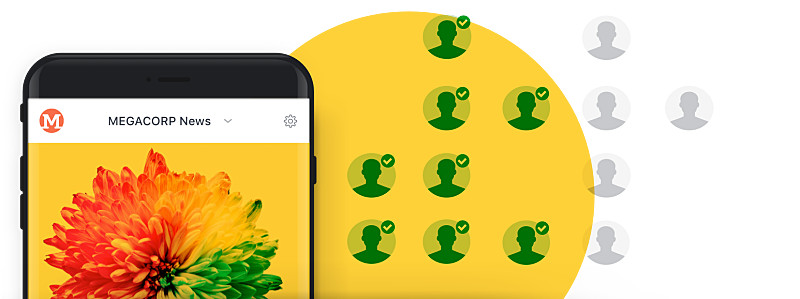
Push notifications are one of the biggest USPs of native apps. And as the saying goes, friendships are cultivated by letting people hear from you from time to time. Various studies show that the use of push notifications to maintain relationships with users is a key success factor in terms of reach, app usage and growth. The data shows that there is a correlation between a high frequency of messages and updates and a good retention rate. App retention refers to how actively a user actually opens and uses the app after downloading it.
A 2017 study by Urban Airship, for example, showed that users who received a daily push message had the highest retention rate after 90 days. It is obvious that it is generally easier to keep opt-in users (i.e. those who have actively agreed to the push notifications). However, the result that users who have actively agreed to push notifications once and then do not receive any messages have the lowest retention rate of all is quite surprising. Using push notifications in a smart and targeted way to activate users is therefore an essential factor for all app operators.
Personalization as the key
Sending push notifications on important topics, content or information is the “duty” and is simply expected from professional apps. The “freestyle” is the personalization of push notifications based on the user’s behavior, the so-called “behavioral targeting”. tchop offers different approaches for this, which result from user-generated content, comments and of course also from the chat. In various blog posts we have described the important role of push messages in activating users.

However, the prerequisite for these push notifications is a minimum level of activity in the app. In fact, many apps lose about 70% of their users right after installation. 30 days after installation, an average of 10% of users remain. Optimizing this data therefore offers great potential. Especially the time window of the first days after installation is crucial to gain a firm place in his or her smartphone usage.
In order to bring people back and activate their own application again and again, personalized push messages are the most efficient means of choice. It is important to send relevant and up-to-date offers and information. Push messages should be exclusive, urgent, stimulating (emotional) and beneficial to the user – and definitely not annoying! The right choice of words is also important, as a study by Leanplum has shown.
Automated User Retention
With the latest app update and various technical enhancements, it is now possible to send users push notifications with any content based on various criteria, either automatically or manually:
- Operating system (iOS or Android)
- App version – e.g. to inform users again about an update.
- Language setting of the phone – e.g. to reach users with a certain language setting.
- Location – e.g. to communicate something to users in a certain country or city.
- User-specific criteria, so-called “user properties”; these are, for example, those contained in the user’s profile (example: if the user has not yet uploaded a photo, he or she can be reminded of this via a push message)
- Time of first app use
- Last app use or session
The last two options in particular are important for using automated, personalized retention pushes. Some examples:
- If the user does not open the app a second time within a certain period of time (e.g. 2 days) after the first installation, he automatically receives a kind of welcome push message.
- If the user is still not active after a few days, he will receive another push message, which will draw his attention to particularly exciting advantages and offers in the app.
- If a loyal user, who usually opens the app once a day, has not been active for more than 2 days, for example, he or she will receive a notification about new content, a special offer or another benefit.
- If a user has never registered after using the app for a longer period of time, he or she can be automatically prompted to do so (in order to comment or chat).
The possibilities are manifold. Content and texts can of course be changed and tested for each push message. The push can of course also be combined with other features such as in-app messages to draw attention to certain things such as surveys, offers or content, because the number of sent push messages and the opening rates can be used to monitor the success of each individual measure.
Firebase Predictions
The Google technology platform we use, Firebase, also provides a so-called “Predictions” format to filter and identify users anonymously (Important: Firebase itself does not have any user-related data). Predictions applies machine learning to its own analytics data to create dynamic user segments based on the predicted behavior of your users. In doing so, the analytics tries to identify which users are likely to stop using the app in the next point in time. The idea behind prediction is that it is difficult to re-engage a user who has already stopped using an app. Prediction can be used to include users in push activities who are predicted not to return to your app.
Summary
Many app providers focus heavily on downloads and attracting new users instead of finding strategies for keeping them loyal over the long term. The first days and weeks after installation are the decisive phase. The concrete retention strategy, which can be stored automatically, must always match your own offer. We are happy to coordinate this with our customers. In addition, we provide ideas, best practices and templates that enable an easy start into the topic and a solid basic set-up.









